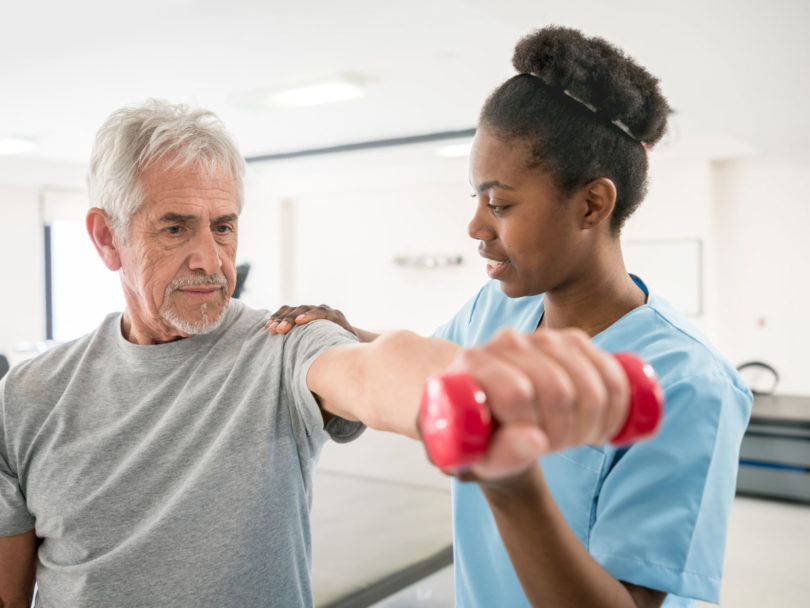Have you experienced treatment pain? Some aspects of physical therapy (PT) can be a little uncomfortable; the old saying, “No pain, no gain,” does not apply. Physical therapists often hear “What should I expect when I start PT?”
Your initial visit, which is the evaluation, is the time when the physical therapist gets to know you. The therapist will find out what your limitations are as well as your short-term and long-term goals, and then will create an individualized treatment plan specifically for your needs. Your ideal treatment plan should consist of corrective exercises and stretches performed in the clinic under supervision. This should include hands-on time with the DPT (doctor of physical therapy) or PTA (physical therapist assistant) and may include treatment options such as the Graston Technique, manual therapy/massage, electrical stimulation, dry needling, Kinesio taping, biofeedback for men’s and women’s pelvic health issues, neck or spinal traction, and neuro programs such as LSVT-gait therapy and Rock Steady Boxing classes for Parkinson’s.
The main objectives are to decrease your overall pain, retrain your mechanics and give you the tools necessary to help you transition back to your own daily routine. Always ask questions, be an advocate for yourself and never assume! Making sure you understand all facets of your physical therapy and treatment plans is a vital part of your healing process.







